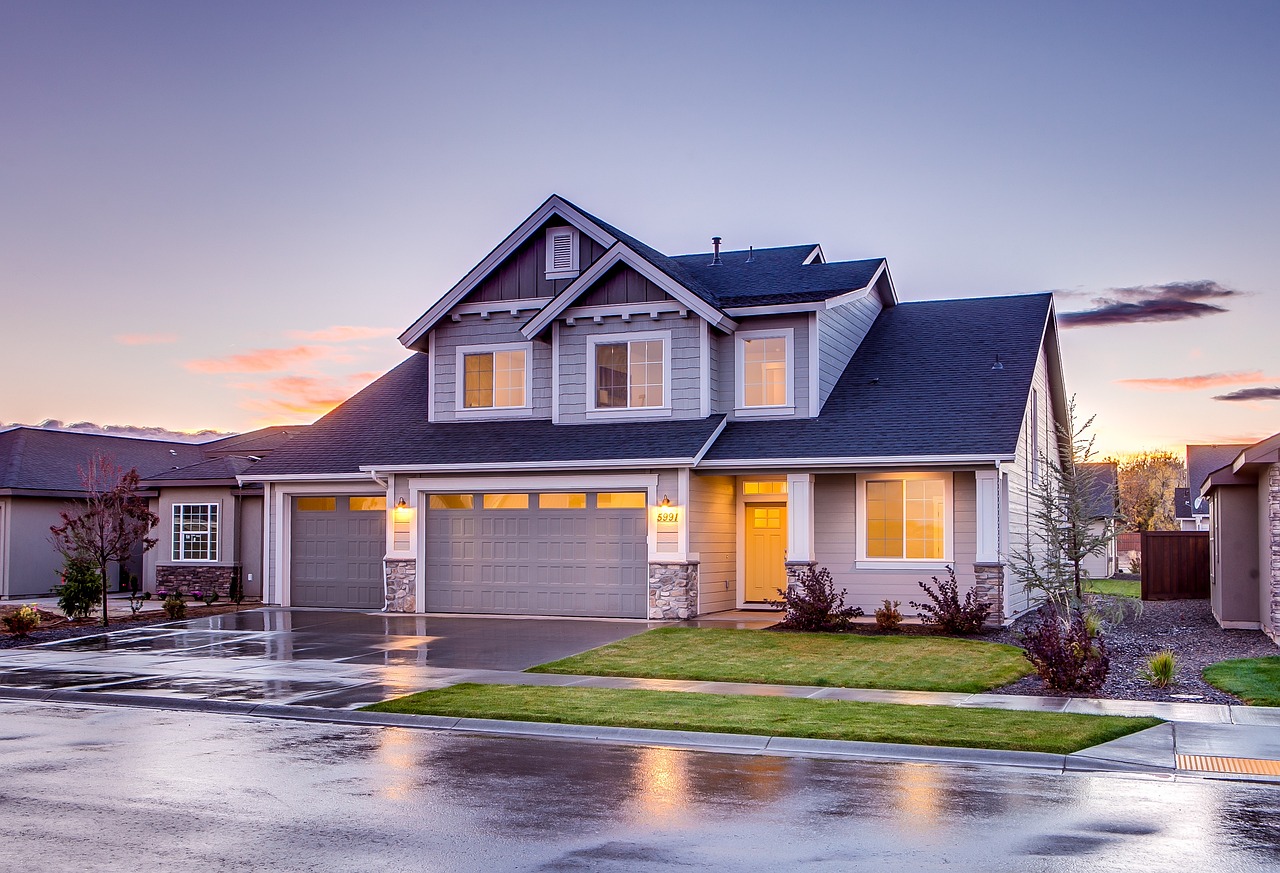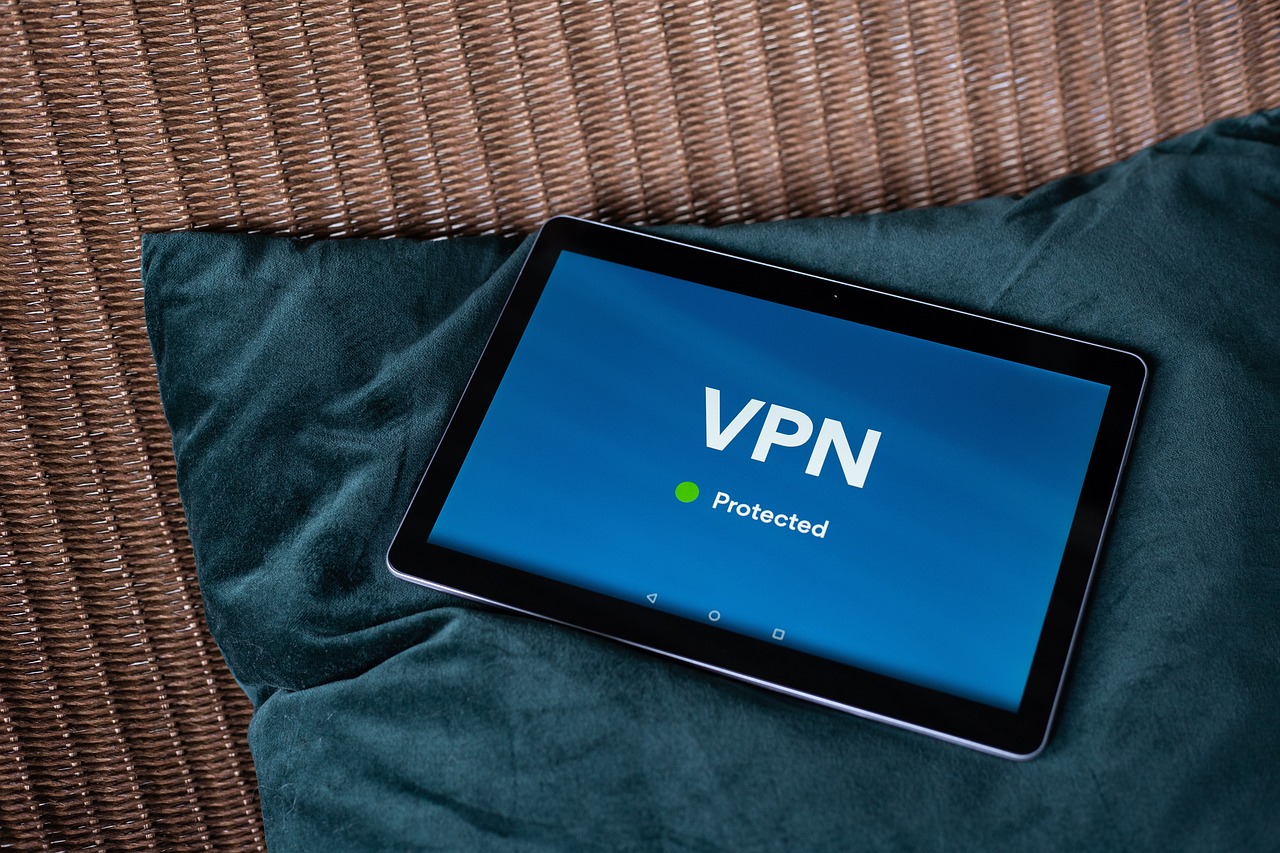The Importance of Home Safety in the Digital Age
In today's interconnected world, ensuring home safety has become increasingly complex. With the advent of smart technology, our homes are not just physical spaces; they are now digital ecosystems that require constant vigilance. Imagine your home as a fortress, but instead of stone walls, it relies on a network of devices that can be both a boon and a bane. This article explores various aspects of home safety, emphasizing the need for vigilance and proactive measures in the digital era.
With the rise of smart home devices, understanding the digital threats that can compromise home safety is essential. These devices, while convenient, can be vulnerable to cyberattacks. For instance, did you know that poorly secured smart cameras can be hacked, allowing intruders a view into your private life? It's like leaving your front door wide open! The importance of cybersecurity measures cannot be overstated. Homeowners must be aware of common vulnerabilities such as weak passwords, outdated software, and unsecured Wi-Fi networks. By taking proactive steps, such as regularly updating device firmware and using strong, unique passwords, you can significantly reduce the risk of cyber intrusions.
Smart home security systems offer enhanced protection through automation and remote monitoring. These systems not only detect intrusions but can also alert you in real time, allowing for a swift response. Imagine being able to monitor your home from anywhere in the world with just a tap on your smartphone! The features and benefits of these systems are vast, including motion detection, video surveillance, and automated lighting. Homeowners can make informed decisions about their security needs by understanding what each system offers.
Selecting the appropriate smart security system involves considering various factors, including budget, functionality, and ease of use. Think of it as shopping for a new car; you wouldn't just pick the first one you see! Evaluate your needs: do you want a system that integrates with existing devices, or are you starting from scratch? Consider the long-term costs, including subscription fees for monitoring services. A well-researched choice can save you from buyer's remorse down the line.
Integrating new security systems with existing smart home devices can enhance overall safety. Compatibility is key here; you wouldn’t want to buy a fancy new gadget that doesn’t play well with your current setup. When selecting a security system, check if it can seamlessly integrate with devices like smart locks, lights, and thermostats. This not only simplifies control but also creates a cohesive smart home environment that works in harmony to keep you safe.
Effective monitoring and alert systems are crucial for timely responses to potential threats. Imagine receiving a notification on your phone when someone approaches your front door, even if you're miles away! Different monitoring options are available, from professional monitoring services to DIY solutions. Each has its pros and cons, so it’s essential to choose one that aligns with your lifestyle and security needs. Keeping homeowners informed and secure is the ultimate goal.
In the digital age, maintaining online privacy is integral to home safety. With so much personal information shared online, it’s vital to safeguard your data. Best practices for protecting your personal information include using strong passwords, enabling two-factor authentication, and regularly reviewing privacy settings on social media. Think of your online presence as a digital footprint; the smaller and more secure it is, the less likely you are to attract unwanted attention.
While digital security is vital, physical security measures remain essential for home safety. Traditional security practices complement digital efforts, ensuring a well-rounded approach to protection. For instance, installing deadbolts on doors and reinforcing window locks can deter intruders. It's not just about having the latest technology; sometimes, a sturdy lock is all you need to keep your home safe.
Securing doors and windows is the first line of defense against intruders. Effective strategies for reinforcing entry points include investing in high-quality locks, using alarm systems, and installing surveillance cameras. Think of your home as a treasure chest; the more secure the locks, the less likely someone will try to break in. It's also wise to keep entry points well-lit and visible, as darkness can provide cover for unwanted visitors.
Engaging with local neighborhood watch programs fosters community safety. These programs create a network of vigilant neighbors looking out for one another. Collaborating with your neighbors not only enhances vigilance but also deters criminal activities in residential areas. Remember, safety is a community effort; the more eyes on the street, the safer everyone feels.
- What are the most common digital threats to home safety? Common threats include hacking of smart devices, phishing attacks, and insecure Wi-Fi networks.
- How can I choose the right smart security system? Consider your budget, the features you need, and how well it integrates with your existing devices.
- What steps can I take to maintain my online privacy? Use strong passwords, enable two-factor authentication, and regularly review your privacy settings.
- Are physical security measures still necessary? Yes! Physical security measures complement digital efforts and provide a well-rounded approach to home safety.

Understanding Digital Threats
In our increasingly connected world, the concept of home safety has transcended traditional boundaries. With the advent of smart home devices, the risks we face have evolved, making it crucial for homeowners to understand the digital threats that lurk in the shadows. These threats can compromise not just your privacy but also the safety of your family and property. Have you ever thought about how a simple internet-connected device could be a potential gateway for cybercriminals? It's a startling reality that demands our attention.
One of the primary vulnerabilities in smart homes lies in the devices themselves. Many homeowners purchase smart gadgets without fully considering their security implications. For instance, devices like smart doorbells, thermostats, and security cameras can be susceptible to hacking if not properly secured. Cybercriminals often exploit weak passwords or outdated software to gain unauthorized access. This is why it's vital to implement strong cybersecurity measures. Here are some common vulnerabilities to be aware of:
- Weak Passwords: Using easily guessable passwords can open the door to intruders.
- Outdated Firmware: Failing to update device software can leave security holes.
- Unsecured Networks: Connecting devices to an unprotected Wi-Fi network can expose them to attacks.
To combat these threats, homeowners must adopt a proactive approach to cybersecurity. This means regularly updating device firmware, using strong, unique passwords, and considering additional security measures like two-factor authentication. It's like locking your doors and windows; you wouldn't leave your home unprotected, would you? The same logic applies to your digital assets.
Moreover, the importance of cybersecurity extends beyond just your devices. It also encompasses the networks that connect them. A compromised Wi-Fi network can serve as a launchpad for attacks on your smart home devices. Therefore, investing in a robust router and utilizing features like guest networks can significantly enhance your home’s digital security. Think of it as building a fortress around your digital life.
In conclusion, understanding the digital threats that can compromise home safety is not just an option; it’s a necessity in today’s world. By being informed and taking proactive measures, you can secure your home against potential cyber intrusions and protect your family from harm. Remember, in the realm of home safety, knowledge is power.

Smart Home Security Systems
In the era of technology, have emerged as a game-changer for homeowners looking to enhance their safety. These systems are not just about having an alarm that goes off when a door is breached; they offer a comprehensive suite of features that can be tailored to meet the unique needs of each household. Imagine being able to monitor your home from anywhere in the world with just a few taps on your smartphone. This level of convenience and control is what makes smart security systems so appealing.
One of the most significant advantages of smart home security systems is their ability to integrate with other smart devices in your home. For instance, you can link your security cameras with smart lighting systems to create a well-rounded safety net. When motion is detected, the lights can automatically turn on, illuminating any potential intruder’s path and increasing the chances of deterring them. This interconnectedness not only enhances security but also provides homeowners with a sense of peace knowing that their home is under constant surveillance.
Furthermore, these systems often come equipped with advanced features such as facial recognition and motion tracking. Some systems can even send real-time alerts to your phone, notifying you of any suspicious activity. Imagine receiving a notification while you’re at work, letting you know that someone is lingering around your front porch. With smart home security, you can act quickly, whether that means contacting the authorities or simply checking in through your security camera feed.
When considering a smart home security system, it’s crucial to evaluate the various features available. Here’s a quick overview of what you might find:
- Remote Access: Control and monitor your security system from anywhere via a mobile app.
- Home Automation Integration: Sync with other smart devices for enhanced functionality.
- Video Surveillance: Live streaming and recorded footage from security cameras.
- Smart Alerts: Instant notifications for any unusual activities detected.
Choosing the right smart home security system can feel overwhelming, especially with the plethora of options available. It’s essential to consider your specific needs, such as the size of your home, the number of entry points, and your budget. Some systems are more suited for larger homes with multiple entry points, while others are perfect for smaller spaces. Additionally, you should think about whether you prefer a DIY installation or professional installation services, as this can significantly affect your overall experience.
In conclusion, smart home security systems are not just a trend; they are a necessity in our increasingly connected world. With their advanced features and integration capabilities, they provide homeowners with the tools they need to protect their families and belongings. As we continue to embrace technology, it’s vital to stay informed and proactive about our home security options.
Q: What are the main benefits of installing a smart home security system?
A: Smart home security systems offer enhanced monitoring, remote access, integration with other smart devices, and real-time alerts, providing a comprehensive approach to home safety.
Q: Can I install a smart security system myself?
A: Yes, many smart security systems are designed for easy DIY installation, although professional installation is also available for those who prefer it.
Q: How do smart home security systems protect against cyber threats?
A: Most smart security systems employ encryption and secure protocols to protect your data. Regular updates and strong passwords can further enhance your system's cybersecurity.

Choosing the Right System
When it comes to choosing the right smart security system for your home, the options can feel overwhelming. With a myriad of choices available, how do you ensure that you pick the one that suits your needs perfectly? It’s like shopping for a new car; you want something that fits your lifestyle, budget, and provides the features you desire. First and foremost, you need to consider your budget. Smart security systems can range from affordable DIY options to high-end, professionally installed setups. Setting a budget helps narrow down your choices and prevents you from getting lost in the sea of features.
Next, think about the functionality you require. Do you want a system that includes video surveillance, motion detectors, or smart locks? Perhaps you’re looking for a system that integrates seamlessly with your existing smart home devices. The best systems offer a variety of features that can be tailored to your specific needs. For example, if you frequently travel, you might prioritize remote monitoring capabilities so you can check in on your home from anywhere in the world.
Another crucial factor is ease of use. You want a system that is user-friendly and doesn’t require a degree in computer science to operate. Look for systems with intuitive apps and straightforward installation processes. Remember, the goal is to enhance your home security, not to create additional stress. A complicated system can quickly become a headache, leading to frustration when you need it most.
To help you visualize your options, here’s a simple comparison table of some popular smart security systems:
| System Name | Price Range | Key Features | Ease of Use |
|---|---|---|---|
| Ring | $$ | Video Doorbell, Motion Alerts, Integration with Alexa | Very Easy |
| Arlo | $$$ | Wireless Cameras, Night Vision, Cloud Storage | Moderate |
| SimpliSafe | $$ | DIY Installation, 24/7 Monitoring, No Contracts | Very Easy |
| ADT | $$$$ | Professional Monitoring, Smart Home Integration, Home Automation | Moderate |
As you can see from the table, each system has its unique strengths and weaknesses. You should weigh these against your personal needs and preferences. Additionally, consider the customer support offered by the provider. A responsive and helpful support team can make a world of difference, especially if you encounter issues down the road.
Finally, read reviews and seek recommendations from friends or family who have experience with these systems. Personal insights can provide valuable information that you won’t find in marketing materials. Remember, choosing the right security system is about finding the perfect balance between cost, features, and usability. Take your time, do your research, and don’t hesitate to ask questions. After all, your home’s safety is worth the investment!

Integration with Existing Devices
When it comes to enhancing your home security, integration with existing smart devices is a game changer. Imagine your smart thermostat not only regulating the temperature but also alerting you if it detects unusual activity. This synergy between devices can create a seamless experience that not only boosts your security but also enhances your daily life. However, it’s crucial to ensure that all your devices can communicate effectively with one another.
Many homeowners may feel overwhelmed by the variety of devices available on the market. From smart locks to security cameras, the options are endless. But fear not! Most modern security systems are designed to be compatible with a range of devices. For instance, if you already have smart lights, integrating them with your security system can allow you to automatically turn them on when motion is detected, creating the illusion that someone is home. This can be particularly effective in deterring potential intruders.
When considering integration, keep in mind the following factors:
- Compatibility: Check if the new security system works with your existing devices. Look for systems that support common protocols like Z-Wave or Zigbee.
- User Interface: A unified app or dashboard that allows you to control all devices makes it easier to manage your home security.
- Expandability: Choose a system that allows for future additions. You may want to add more devices as your needs change.
Additionally, many manufacturers offer integration kits that can help bridge the gap between different brands. These kits often include software updates or hardware components that allow devices to communicate more effectively. It's like giving your home a digital makeover that enhances security while keeping everything user-friendly.
To sum it up, integrating your smart home security system with existing devices is not just about adding more gadgets; it's about creating a cohesive environment that enhances your safety and convenience. With the right setup, your home can become a fortress of protection, all while you enjoy the comforts of modern technology.
Q: Can I integrate devices from different brands?
A: Yes, many modern smart home devices are designed to work together, but it's essential to check for compatibility. Look for systems that support common communication protocols.
Q: What if my existing devices are not compatible?
A: You might consider using integration kits or hubs that can bridge the gap between different brands, allowing for better communication and control.
Q: Will integrating devices slow down my network?
A: Generally, a well-configured smart home network should not slow down your internet. However, ensure that your router is capable of handling multiple devices efficiently.

Monitoring and Alerts
When it comes to home safety, effective monitoring and alert systems play a pivotal role in ensuring that homeowners are always one step ahead of potential threats. In our fast-paced world, where every second counts, having a reliable monitoring system can mean the difference between a minor scare and a major disaster. Imagine being able to receive instant notifications on your smartphone whenever your security cameras detect unusual activity. Wouldn't that give you peace of mind? With the right technology, this is not just a dream; it's a reality.
Modern security systems come equipped with a variety of monitoring options that cater to your specific needs. From video surveillance to motion detectors, these systems are designed to keep a vigilant eye on your home, 24/7. For instance, many systems now offer real-time alerts that can notify you via text message or push notifications on your mobile device. This means that whether you're at work, on vacation, or just lounging on the couch, you can stay informed about what's happening at home.
Here are some common monitoring options that you might consider:
- Video Surveillance: High-definition cameras that allow you to see live feeds of your property from anywhere.
- Motion Sensors: Devices that detect movement and can trigger alarms or send alerts.
- Smart Doorbell Cameras: These not only let you see who is at your door but also allow for two-way communication.
- Window and Door Sensors: These sensors alert you if a door or window is opened unexpectedly.
Choosing the right monitoring system largely depends on your lifestyle and specific security needs. Some systems allow for integration with other smart home devices, providing a comprehensive security solution that can be controlled from a single app. This level of integration not only simplifies your security management but also enhances your home’s overall safety.
In addition to monitoring, the way alerts are configured can greatly impact your response time. For example, some systems offer customizable alerts, allowing you to set different levels of urgency based on the type of threat detected. This can help you prioritize your responses effectively. Imagine receiving a low-priority alert for a harmless cat wandering into your yard while being immediately notified of a potential break-in. This tailored approach ensures that you remain calm and collected, even in stressful situations.
Furthermore, many modern security systems provide the option for cloud storage of surveillance footage. This means that even if an incident occurs, you’ll have access to recorded evidence that can be crucial for investigations. Not only does this feature enhance your security, but it also provides you with a sense of control over your home environment.
In summary, investing in a robust monitoring and alert system is essential for any homeowner looking to enhance their safety in today's digital age. With a combination of real-time alerts, customizable settings, and integration with other smart devices, you can create a security network that not only protects your home but also gives you the peace of mind you deserve.
Q: What types of monitoring systems are best for home security?
A: The best systems often include a combination of video surveillance, motion detectors, and smart doorbell cameras to provide comprehensive coverage.
Q: How do I choose the right monitoring system for my home?
A: Consider your specific needs, budget, and the level of integration you desire with other smart home devices.
Q: Can I access my security system remotely?
A: Yes, most modern systems allow you to monitor your home remotely via a smartphone app.
Q: What should I do if I receive an alert from my monitoring system?
A: Assess the situation calmly, check the live feed if available, and contact local authorities if necessary.

Maintaining Privacy Online
In our fast-paced digital world, where everything is just a click away, maintaining your online privacy has never been more critical. Think about it: every time you log into a social media platform or shop online, you're sharing bits of your life with the internet. It's like leaving your front door wide open while you go about your day. This openness can lead to unwanted intrusions into your personal space, both physically and digitally. So, how can you safeguard your privacy in this interconnected landscape?
First and foremost, it's essential to understand that your personal information is valuable. Cybercriminals are constantly on the lookout for data that they can exploit, whether it be for identity theft, fraud, or other malicious activities. To combat this, here are some best practices you can adopt:
- Use Strong Passwords: Create complex passwords that combine letters, numbers, and symbols. Avoid using easily guessable information like birthdays or pet names.
- Enable Two-Factor Authentication: This adds an extra layer of security by requiring a second form of verification beyond just your password.
- Be Wary of Public Wi-Fi: Avoid accessing sensitive information over public networks. If necessary, use a VPN to encrypt your data.
- Regularly Update Software: Keeping your devices and applications updated ensures you have the latest security patches.
Moreover, being mindful of the information you share online is crucial. Before posting anything, ask yourself: Is this information necessary? Could it be misused? For instance, sharing your location in real-time can make you vulnerable to unwanted attention. Instead, consider posting updates after you've left a location.
Another vital aspect of maintaining online privacy is managing your digital footprint. Every interaction you have online leaves a trace, and it’s essential to regularly review your privacy settings on social media and other platforms. Make sure you know who can see your posts and personal information. You might be surprised to find that your settings are more public than you think!
Finally, consider utilizing privacy-focused tools and services. There are many browsers and search engines designed to protect your privacy, like DuckDuckGo, which doesn’t track your searches. Additionally, consider using encrypted messaging apps for private conversations. These tools can significantly reduce the risk of your personal information being intercepted.
In summary, maintaining online privacy is not just about protecting your data; it's about preserving your peace of mind. By adopting proactive measures and being aware of your digital surroundings, you can enjoy the benefits of the internet while minimizing the risks. Remember, in this digital age, staying informed and cautious is your best defense against potential threats.
Q: Why is online privacy important?
A: Online privacy is crucial because it protects your personal information from cybercriminals and helps prevent identity theft, fraud, and other malicious activities.
Q: What are some common threats to my online privacy?
A: Common threats include phishing scams, malware, and data breaches that can expose your personal information to unauthorized individuals.
Q: How can I check if my online accounts have been compromised?
A: You can use services like Have I Been Pwned to check if your email has been involved in a data breach. Additionally, monitor your accounts for any suspicious activity.
Q: Is it safe to use public Wi-Fi?
A: Public Wi-Fi can be risky. If you must use it, ensure you connect through a VPN to secure your data.
Q: What is two-factor authentication, and why should I use it?
A: Two-factor authentication adds an extra layer of security by requiring a second form of verification, making it harder for unauthorized users to access your accounts.

Physical Security Measures
While we live in an age where digital threats loom large, it's crucial to remember that are just as important for ensuring the safety of our homes. Think of your home as a castle; no matter how advanced your digital defenses are, if the drawbridge is down, invaders can easily stroll in. The first step in fortifying your home is to secure all entry points. Doors and windows are the primary gateways for intruders, so investing in high-quality locks, reinforced doors, and window security is essential. A sturdy deadbolt on your front door, for instance, can deter even the most determined burglar.
Moreover, consider installing security alarms and surveillance cameras. These devices not only serve as a deterrent but also provide vital evidence in case of an incident. Imagine coming home after a long day, only to find that your home has been compromised. The last thing you want is to feel vulnerable in your own space. A well-placed security camera can give you peace of mind, allowing you to monitor your property remotely.
In addition to these measures, engaging with your neighbors can significantly enhance your home's security. Neighborhood watch programs are a fantastic way to foster a sense of community and vigilance. When neighbors look out for one another, it creates an environment where suspicious activities are quickly reported and addressed. You might be surprised at how much safer you feel when you know your neighbors are keeping an eye on things.
To further illustrate the importance of physical security measures, consider the following table that outlines common security measures and their benefits:
| Security Measure | Benefits |
|---|---|
| High-Quality Locks | Deters break-ins, ensures peace of mind |
| Security Cameras | Provides evidence, deters crime |
| Alarm Systems | Immediate alerts, potential to scare off intruders |
| Neighborhood Watch | Community vigilance, quick response to suspicious activities |
As you can see, integrating these physical security measures into your home not only enhances safety but also fosters a sense of community. In a world where we often feel isolated, taking proactive steps to secure our homes can create connections with our neighbors and build a safer environment for everyone. So, whether it's reinforcing your doors or joining a neighborhood watch, remember that every little bit helps in safeguarding your sanctuary.
Q: What are the most effective physical security measures for my home?
A: Effective measures include high-quality locks, security cameras, alarm systems, and community engagement through neighborhood watch programs.
Q: How can I improve my home security on a budget?
A: Simple steps like installing better locks, using door and window sensors, and getting to know your neighbors can significantly enhance security without breaking the bank.
Q: Are smart locks a good investment?
A: Yes, smart locks offer convenience and enhanced security features, such as remote access and alerts, making them a worthy investment for modern homes.
Q: How can I encourage my neighbors to join a neighborhood watch?
A: Start by discussing the benefits of community safety at local gatherings or through social media groups. Organize a meeting to share ideas and create a plan together.

Securing Entry Points
When it comes to home safety, securing entry points is your **first line of defense** against potential intruders. Think of your home as a fortress; the stronger the walls and gates, the less likely an enemy will dare to approach. It’s not just about locking doors and windows; it’s about creating a comprehensive strategy that integrates various security measures to ensure your home remains a safe haven.
Start with the basics: **doors and windows**. These are the most common entry points for burglars. Installing high-quality locks is essential. Consider using deadbolts, which are much harder to pick compared to standard locks. Additionally, reinforce your doors with a solid core or steel door, as they provide greater resistance against forced entry. For windows, utilize locks and consider window films that make glass more resistant to shattering.
But securing entry points goes beyond just physical barriers. **Surveillance cameras** can serve as a deterrent, making it clear that your home is under watch. When potential intruders see cameras installed, they’re more likely to move on to an easier target. Moreover, smart doorbells with integrated cameras allow you to monitor who approaches your home in real-time, even when you're not there. This technology not only enhances security but also provides peace of mind.
Another effective strategy is to **install an alarm system**. Modern alarm systems can be linked to your smartphone, enabling you to receive alerts if someone tries to enter your home unexpectedly. This immediate notification can be crucial in preventing a break-in. Some systems even offer features like motion sensors and glass break detectors, adding layers of protection.
Lighting plays a significant role in securing entry points as well. **Motion-activated lights** can illuminate dark areas around your home, making it difficult for intruders to approach unnoticed. A well-lit exterior is a simple yet effective deterrent. You might also consider using timers for your indoor lights to create the illusion that someone is home, even when you’re away.
Lastly, don’t forget about your garage. Often overlooked, garages can provide easy access to your home if not properly secured. Ensure that garage doors are equipped with robust locks and that any side doors leading into your home are also secured. If you have an automatic garage door opener, make sure it’s not easily hackable by changing the factory-set codes regularly.
In summary, securing entry points is a multifaceted approach that combines physical security measures, technology, and smart practices. By investing time and resources into these strategies, you can significantly reduce the risk of a break-in and protect your home and loved ones. Remember, a well-secured home is not just about preventing theft; it’s about creating a sense of safety and comfort for everyone inside.
- What is the best type of lock for my doors? Deadbolts are highly recommended due to their strength and resistance to picking.
- How effective are surveillance cameras? Surveillance cameras act as a deterrent and can provide valuable evidence in case of a break-in.
- Should I invest in a smart home security system? Yes, smart home security systems offer convenience and real-time monitoring, enhancing overall home safety.
- How can I secure my windows? Use locks and consider installing window films to make them more resistant to breakage.
- What role does lighting play in home security? Adequate lighting, especially motion-activated lights, can deter intruders by eliminating dark hiding spots.

Neighborhood Watch Programs
When it comes to ensuring the safety of our homes and communities, one of the most effective strategies is the establishment of . These grassroots initiatives are all about neighbors coming together to keep an eye on each other's properties and report suspicious activities. Imagine living in a community where everyone looks out for one another—sounds comforting, right? That's the essence of a Neighborhood Watch. By fostering a sense of community, these programs not only enhance security but also build relationships among residents.
In many cases, the mere presence of vigilant neighbors can deter potential criminals. Criminals are less likely to target areas where they know residents are actively engaged in monitoring their surroundings. Think of it as a neighborhood superhero squad—without the capes! But how do these programs work? Typically, they involve regular meetings where residents discuss safety concerns, share information about local crime trends, and develop strategies to enhance their collective security. These meetings can be informal gatherings or organized events, and they often encourage participation from local law enforcement, which can provide valuable insights and resources.
Moreover, the effectiveness of Neighborhood Watch Programs can be significantly amplified through the use of modern technology. Many communities now utilize social media platforms and neighborhood apps to communicate quickly and efficiently. This means that if someone spots something suspicious, they can alert their neighbors instantly, creating a rapid response network. Imagine receiving a notification on your phone that someone noticed a strange vehicle in the area—it's like having a digital neighborhood watch right in your pocket!
However, it's essential to note that while these programs are beneficial, they should not be viewed as a replacement for law enforcement. Instead, they serve as a complementary force, working alongside police to enhance community safety. It's about creating a partnership where residents feel empowered to take an active role in their security, while still relying on law enforcement for professional assistance when necessary.
To further illustrate the impact of Neighborhood Watch Programs, consider the following table that summarizes key benefits:
| Benefit | Description |
|---|---|
| Increased Awareness | Residents become more aware of their surroundings and potential threats. |
| Deterrence of Crime | Visible neighborhood vigilance can deter criminal activities. |
| Community Engagement | Strengthens relationships among neighbors, fostering a sense of belonging. |
| Resource Sharing | Residents can share security resources, tips, and experiences. |
In conclusion, Neighborhood Watch Programs are a valuable tool in the fight against crime. They not only help to protect homes but also create a sense of community that can make neighborhoods feel safer and more connected. So, if you haven't already, consider starting or joining a Neighborhood Watch in your area. After all, there's strength in numbers, and together, we can create a safer environment for everyone.
- What is a Neighborhood Watch Program?
A Neighborhood Watch Program is a community initiative where residents collaborate to monitor each other's homes and report suspicious activities to enhance safety. - How can I start a Neighborhood Watch Program?
To start a program, gather interested neighbors, schedule a meeting, and reach out to local law enforcement for guidance and support. - Do Neighborhood Watch Programs replace police?
No, they complement law enforcement efforts but do not replace them. They work together to create a safer community. - What technology can assist Neighborhood Watch Programs?
Social media, neighborhood apps, and community messaging services can help facilitate communication and rapid response.
Frequently Asked Questions
- What are some common digital threats to home safety?
In today's digital age, common threats include hacking of smart home devices, phishing attacks targeting personal information, and malware that can compromise your home network. It's crucial to stay informed and implement strong cybersecurity measures to protect against these vulnerabilities.
- How do smart home security systems enhance safety?
Smart home security systems offer features like remote monitoring, automated alerts, and integration with other smart devices. This means you can keep an eye on your home from anywhere, receive instant notifications of suspicious activity, and even control your security system through your smartphone.
- What factors should I consider when choosing a smart security system?
When selecting a smart security system, consider your budget, the functionality you need (like cameras or alarms), and the ease of use. It's also important to think about how well the system will integrate with your existing smart home devices for a seamless experience.
- How can I maintain my online privacy while using smart devices?
To maintain online privacy, regularly update your device software, use strong, unique passwords, and enable two-factor authentication whenever possible. Additionally, be cautious about the personal information you share online and review privacy settings on your devices.
- What physical security measures should I take for my home?
Physical security measures include reinforcing entry points like doors and windows with quality locks, installing alarm systems, and using surveillance cameras. These traditional methods complement your digital security efforts, providing a comprehensive approach to home safety.
- How can neighborhood watch programs improve community safety?
Neighborhood watch programs encourage residents to collaborate and look out for one another. By fostering communication and awareness, these programs can effectively deter criminal activities and create a safer environment for everyone in the community.



















